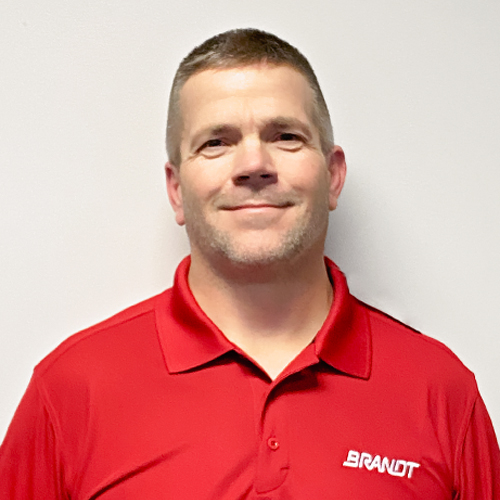BRANDT Safety
Safety is on the forefront of our team’s minds when handling hazardous products.
When an accident or emergency occurs with anhydrous ammonia or aqua ammonia, it is very important to know what safety procedures should be used. We offer safety training and assistance to develop safety programs for your facility.
We are providing this data for informational purposes only. If a person comes in contact with any of the chemicals mentioned, it is imperative to contact your local emergency personnel and/or physician. Users of these products are responsible for investigating and verifying the precautions and dangers involved in the application that they have chosen. Federal, state, municipal, insurance requirements, and national safety codes must be followed and are not to be confused with the precautionary data. Learn more or please contact us.
Safety and First Aid
It is extremely important to follow proper handling and safety procedures when working with anhydrous ammonia. Severe injury or even death can occur without proper care. View trailer unloading procedures as well for additional information.
First Aid
The best way to reduce risk of injury from anhydrous ammonia is to wear protective equipment and to know what to do in case of emergency. Always wear ventless goggles or a full-face shield, rubber gloves with a long cuff that can be rolled to catch drips and a long sleeved shirt. Non-rubber gloves made of ammonia-proof materials may also be acceptable. Never wear contact lenses around ammonia because the lenses collect the chemical and will intensify caustic effects. Always carry a personal water supply (6-8 ounces) in a squeeze bottle to use for instant first aid. Federal law requires at least 5 gallons of water be carried on vehicles transporting anhydrous ammonia.
The best first aid treatment for anhydrous ammonia exposure is water - large amounts of it. Work fast! Flush all exposed areas for at least 15 minutes. If the nose or throat is exposed, flood the area repeatedly for 15 minutes, being careful not to choke the victim. Even a brief or mild exposure to the eyes requires irrigation for a minimum of 15 minutes. Remember to flush underneath the eyelids. Always begin flushing immediately. This reduces injuries, caused as soon as anhydrous ammonia contacts skin or clothes. If water is not available, use any nontoxic liquid such as cold coffee. Orange juice and other mildly acidic liquids will help neutralize the chemical Water from a nearby lake or pond also can be used until other water supplies are available.
Even with proper first aid, seek medical help as soon as possible. Explain the source of the injury so medical providers will not apply oils or ointments, as this treatment intensifies damage from burns. If you find someone in a continuous stream of anhydrous ammonia, do not attempt to rescue without proper equipment. Rescuers must wear a self-contained breathing apparatus (SCBA) and protective clothing. Always take care in removing a victim's clothing. Clothing could be frozen to the skin and removal could cause additional injury. Clothing frozen to the skin by ammonia can be loosened with liberal application of water.
Refrigeration Grade Analysis & Specifications
Ammonia
99.8 (Minimum)
Moisture
0.02 (Maximum) 0.02 (Maximum)
Oil Content
2 PPM (Maximum)
Con-Condensable Gases
Less than 0.01
Metallurgical Grade Analysis & Specifications
Ammonia
99.997 (Minimum)
Moisture
30 PPM (Maximum)
Oil Content
2 PPM (Maximum)
Commercial Grade Analysis & Specifications
Ammonia
99.5 (Minimum)
Nitrogen Content
82.02
Moisture
0.02 to 0.5 (Maximum)
Oil Content
5 PPM (Maximum)
Our Experts
EQUIPMENT/VALVE OPERATION
• Opening control valves too quickly may cause excess flow valves to shut.
• Manual valves should be opened wide when transferring liquid ammonia from tank car to storage tank.
• Purge all air from ammonia system before filling.
• Relief valves must be stamped with the replacement date.
• Never use copper, brass or galvanized parts on ammonia equipment.
• Keep tanks well coated with white or light-colored paint
SAFETY CHECKLIST
• Wear protective equipment
• Always have ample water supply nearby
• Always stand upwind and out of line
• Do not allow bystanders in the area when handling
• Inspect and replace hoses and valves as needed
• Do not pick up a hose and valve by the handle
• Never fill a tank over 85% of capacity
• Bleed off hose pressure before disconnecting
• Stay clear of hose and valve openings
• Never leave liquid ammonia trapped in hoses or pipelines.
• Follow regulations when working with ammonia



